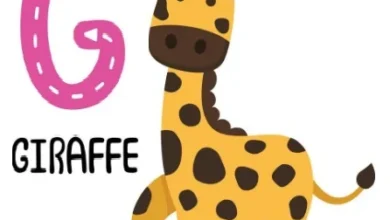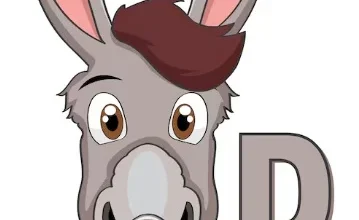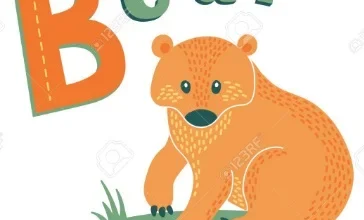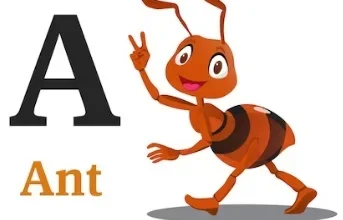Animals
The Wealthy Tapestry of Animal Life: Exploring Variety, Diversifications, and Interconnectedness
Animals
From the majestic elephants of the African savanna to the tiny bugs that inhabit our gardens, the animal kingdom is a testomony to the wonders of life on Earth. With an estimated 8.7 million species, animals inhabit each nook of our planet, displaying an astonishing array of varieties, behaviors, and variations. On this article, we embark on a journey by way of the varied and engaging world of animals, inspecting their classifications, habitats, variations, and ecological roles.
Classification of Animals
Animals are labeled into varied teams based mostly on shared traits and evolutionary relationships. The system of classification, referred to as taxonomy, categorizes animals into hierarchical teams, together with:
- Kingdom Animalia: All animals belong to the dominion Animalia, which encompasses multicellular, eukaryotic organisms which are heterotrophic (receive vitamins by consuming different organisms) and sometimes able to locomotion.
- Phylum: Animals are additional divided into phyla based mostly on anatomical options, physique plans, and developmental patterns. Main animal phyla embody Chordata (vertebrates), Arthropoda (arthropods), Mollusca (mollusks), and Annelida (segmented worms).
- Class: Every phylum is split into lessons based mostly on extra anatomical traits and evolutionary relationships. For instance, the category Mammalia contains mammals, whereas the category Insecta contains bugs.
- Order, Household, Genus, and Species: Inside every class, animals are additional labeled into orders, households, genera, and species based mostly on more and more particular traits and genetic relationships. For instance, people belong to the order Primates, the household Hominidae, the genus Homo, and the species Homo sapiens.
Animal Habitats and Diversifications
Animals inhabit a variety of habitats, from terrestrial forests and grasslands to aquatic oceans and freshwater rivers. Every habitat presents distinctive challenges and alternatives, shaping the variations and behaviors of resident species. Some widespread animal habitats embody:
- Terrestrial Habitats: Terrestrial habitats embody forests, deserts, grasslands, tundra, and mountains. Terrestrial animals have developed varied variations to outlive in these environments, reminiscent of camouflage, burrowing, hibernation, and migration.
- Aquatic Habitats: Aquatic habitats embody oceans, seas, lakes, rivers, and wetlands. Aquatic animals have variations for all times in water, reminiscent of streamlined our bodies, fins, gills, and buoyancy management mechanisms. Marine animals, reminiscent of whales and dolphins, have developed specialised variations for all times within the ocean, together with blubber for insulation and echolocation for navigation.
- Arboreal Habitats: Arboreal habitats encompass timber and forests, the place animals dwell and transfer among the many branches. Arboreal animals, reminiscent of monkeys, squirrels, and koalas, have variations for climbing, greedy, and leaping, together with prehensile tails, greedy arms or toes, and powerful hind limbs.
- Polar Habitats: Polar habitats, together with the Arctic and Antarctic areas, are characterised by excessive chilly, ice, and snow. Polar animals, reminiscent of polar bears, penguins, and seals, have thick layers of insulation, specialised fur or feathers, and variations for searching, swimming, and surviving in subzero temperatures.
- City Habitats: City habitats, reminiscent of cities and cities, are more and more inhabited by wildlife tailored to human-dominated environments. City animals, reminiscent of pigeons, rats, and raccoons, have developed behaviors and variations to take advantage of human assets, reminiscent of scavenging for meals and nesting in buildings.
Ecological Roles of Animals
Animals play various and important roles in ecosystems, contributing to ecosystem stability, biodiversity, and nutrient biking. Among the key ecological roles of animals embody:
- Predators: Predators regulate prey populations, forestall overgrazing, and preserve ecosystem stability by controlling herbivore populations. Apex predators, reminiscent of wolves and lions, have cascading results on meals webs and ecosystem dynamics.
- Prey: Prey species function a meals supply for predators, driving predator-prey interactions and shaping neighborhood construction. Prey populations could exhibit variations for avoiding predation, reminiscent of camouflage, defensive behaviors, and warning coloration.
- Herbivores: Herbivores devour plant matter, influencing plant progress, distribution, and species composition in terrestrial and aquatic ecosystems. Grazing animals, reminiscent of deer and cattle, play a important position in shaping vegetation construction and nutrient biking in grasslands and savannas.
- Pollinators: Pollinators, together with bees, butterflies, birds, and bats, facilitate the replica of flowering vegetation by transferring pollen between flowers. Pollination is important for the manufacturing of fruits, seeds, and crops, supporting ecosystem well being, agricultural productiveness, and meals safety.
- Seed Dispersers: Seed dispersers, reminiscent of birds, mammals, and ants, transport seeds away from dad or mum vegetation, facilitating plant replica and colonization of recent habitats. Seed dispersal contributes to forest regeneration, plant variety, and ecosystem resilience.
Conclusion: The animal kingdom is a testomony to the range, complexity, and interconnectedness of life on Earth. From microscopic invertebrates to majestic mammals, animals inhabit an enormous array of habitats and play various ecological roles important for ecosystem functioning and biodiversity conservation. By understanding and appreciating the wealthy tapestry of animal life, we will deepen our connection to the pure world and work in direction of its preservation and stewardship for future generations.
-

Animals that begin with the letter “J”
Animals beginning with the letter “J . Nevertheless, this is an inventory of animals starting with “J” together with transient…
Read More » -

Animals that begin with the letter “I”
Detailed descriptions for animals beginning with the letter “I. Nevertheless, this is an inventory of animals starting with “I” together…
Read More » -

Animals that begin with the letter “H”
Animals beginning with the letter “H . Nevertheless, this is an inventory of animals starting with “H” together with temporary…
Read More » -

Animals that begin with the letter “G”
Animals beginning with the letter “G . Nonetheless, here is a listing of animals starting with “G” together with transient…
Read More » -

Animals that begin with the letter “F”
Animals beginning with the letter “F . Nevertheless, this is an inventory of animals starting with “F” together with transient…
Read More » -

Animals that begin with the letter “E”
Animals beginning with the letter “E . Nonetheless, here is a listing of animals starting with “E” together with temporary…
Read More » -

Animals that start with the letter “D”
This is a listing of animals that begin with the letter “D” together with basic descriptions: Dolphin: Extremely smart marine…
Read More » -

Animals that begin with the letter “C”
Here is an inventory of animals that begin with the letter “C” together with transient descriptions: Cheetah: The quickest land…
Read More » -

Animals that start with the letter “B”
Animals that begin with the letter “B” together with transient descriptions: Baboon: Primates present in Africa and Arabia identified for…
Read More » -

Animals that start with the letter “A”
Here is a extra detailed listing of animals that begin with the letter “A” together with basic descriptions: Aardvark: A…
Read More »